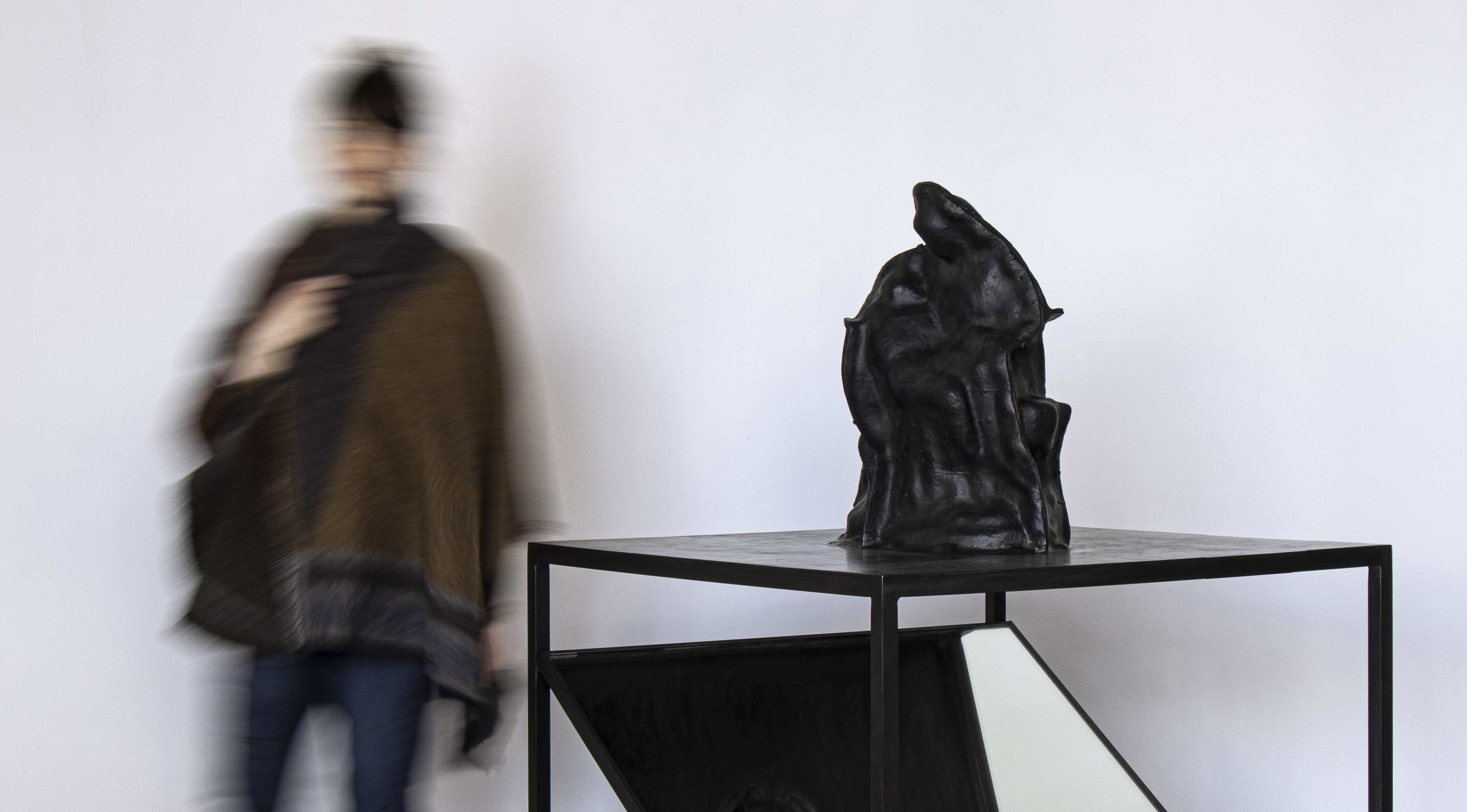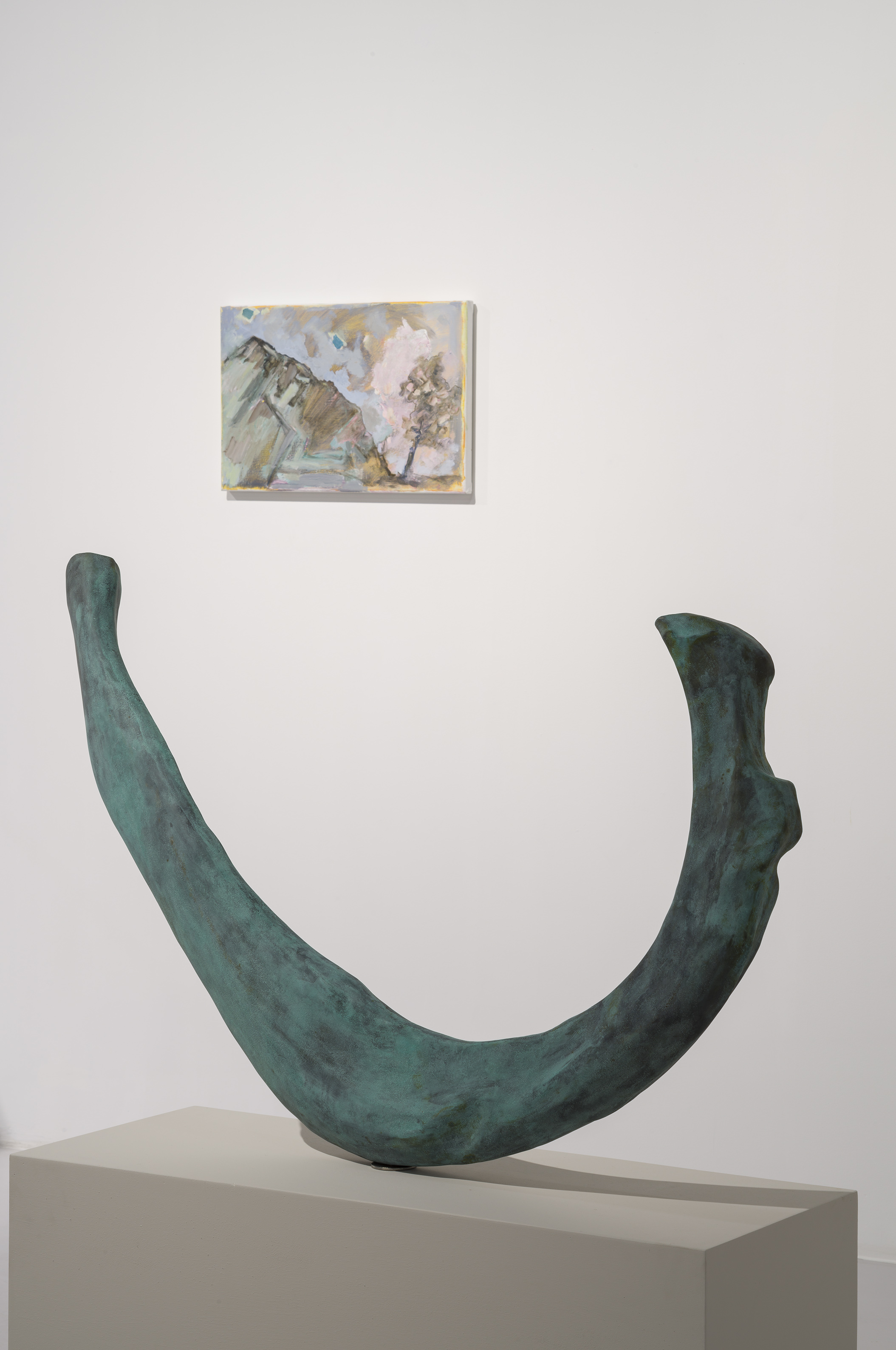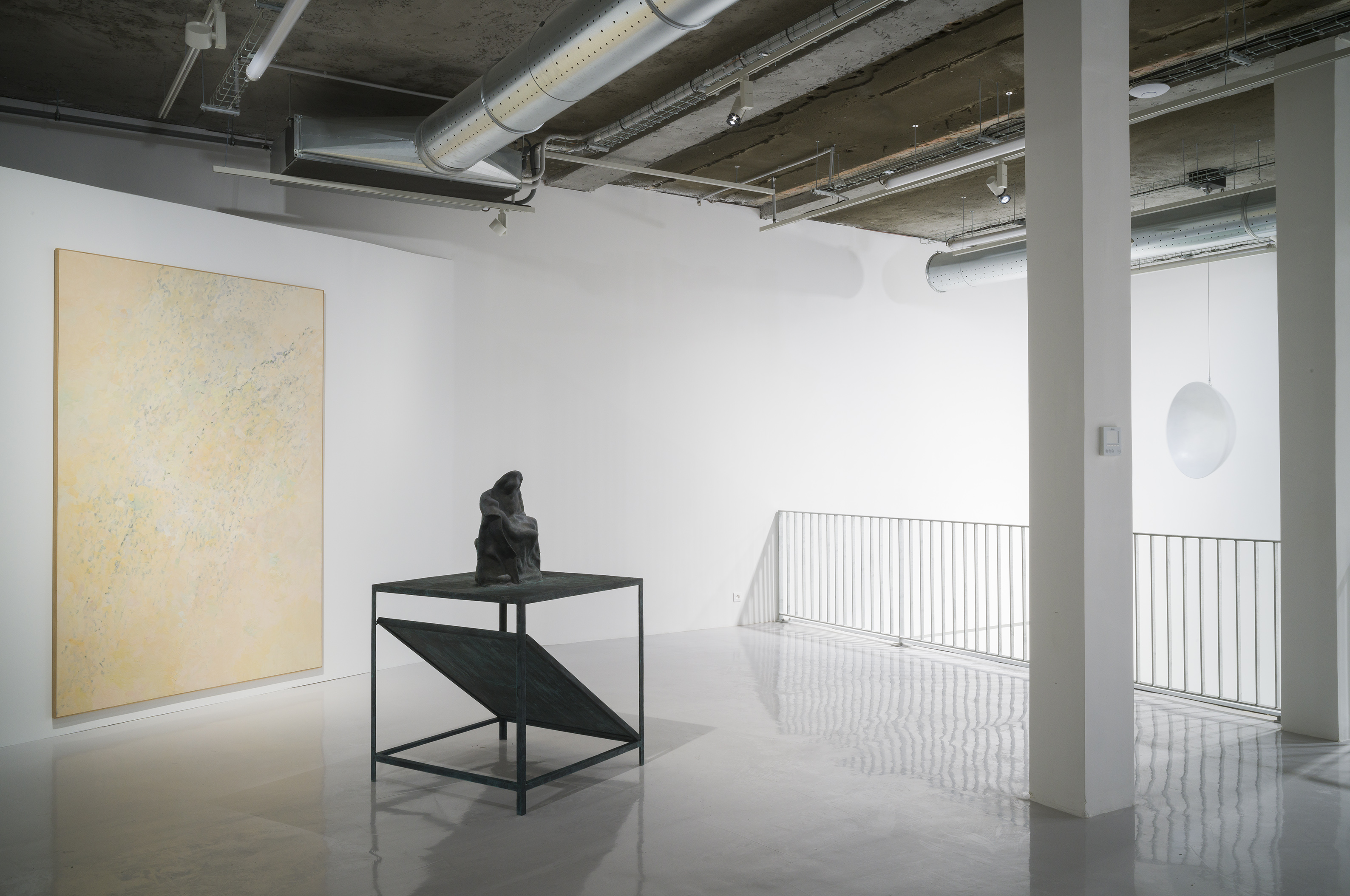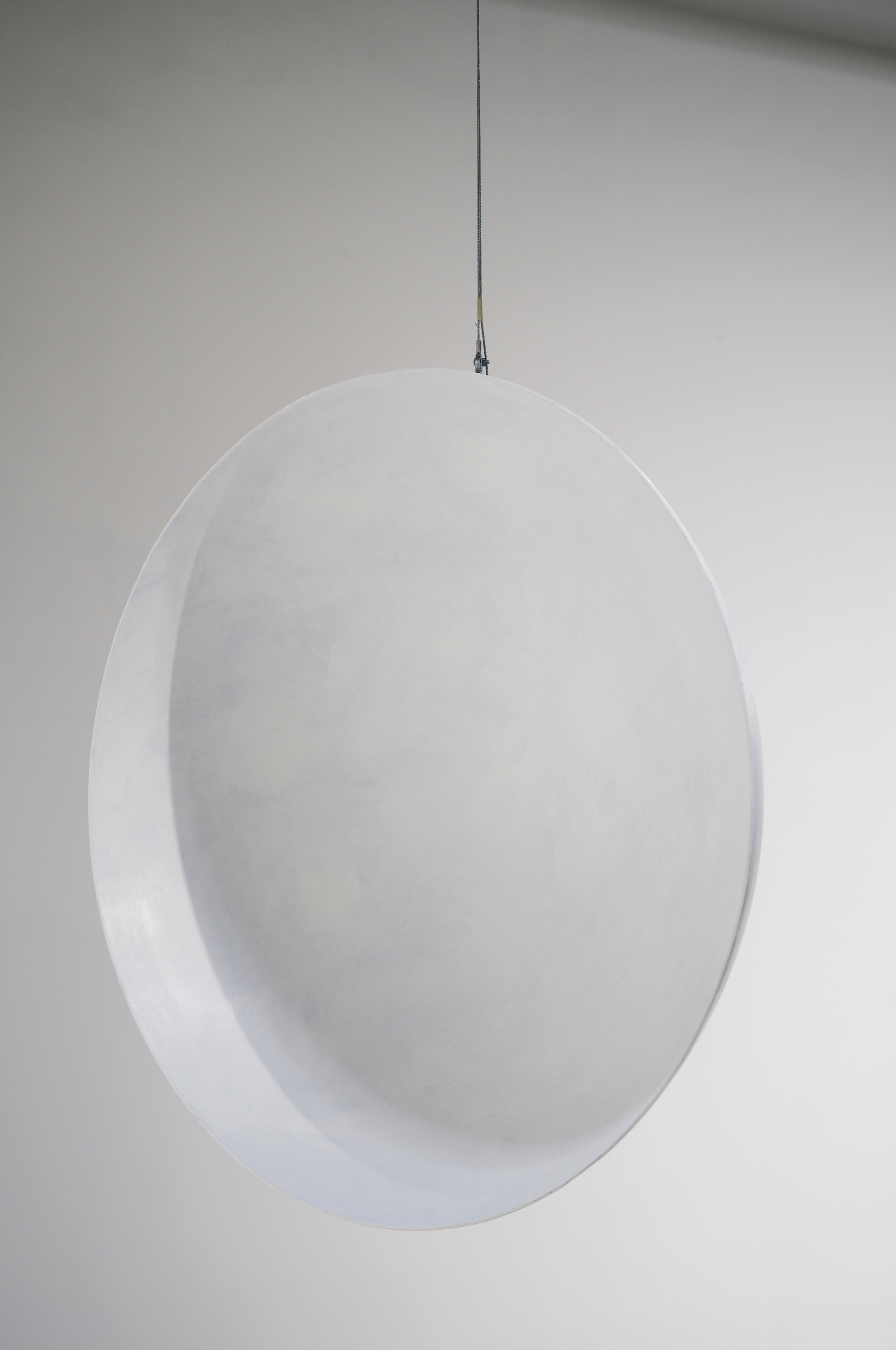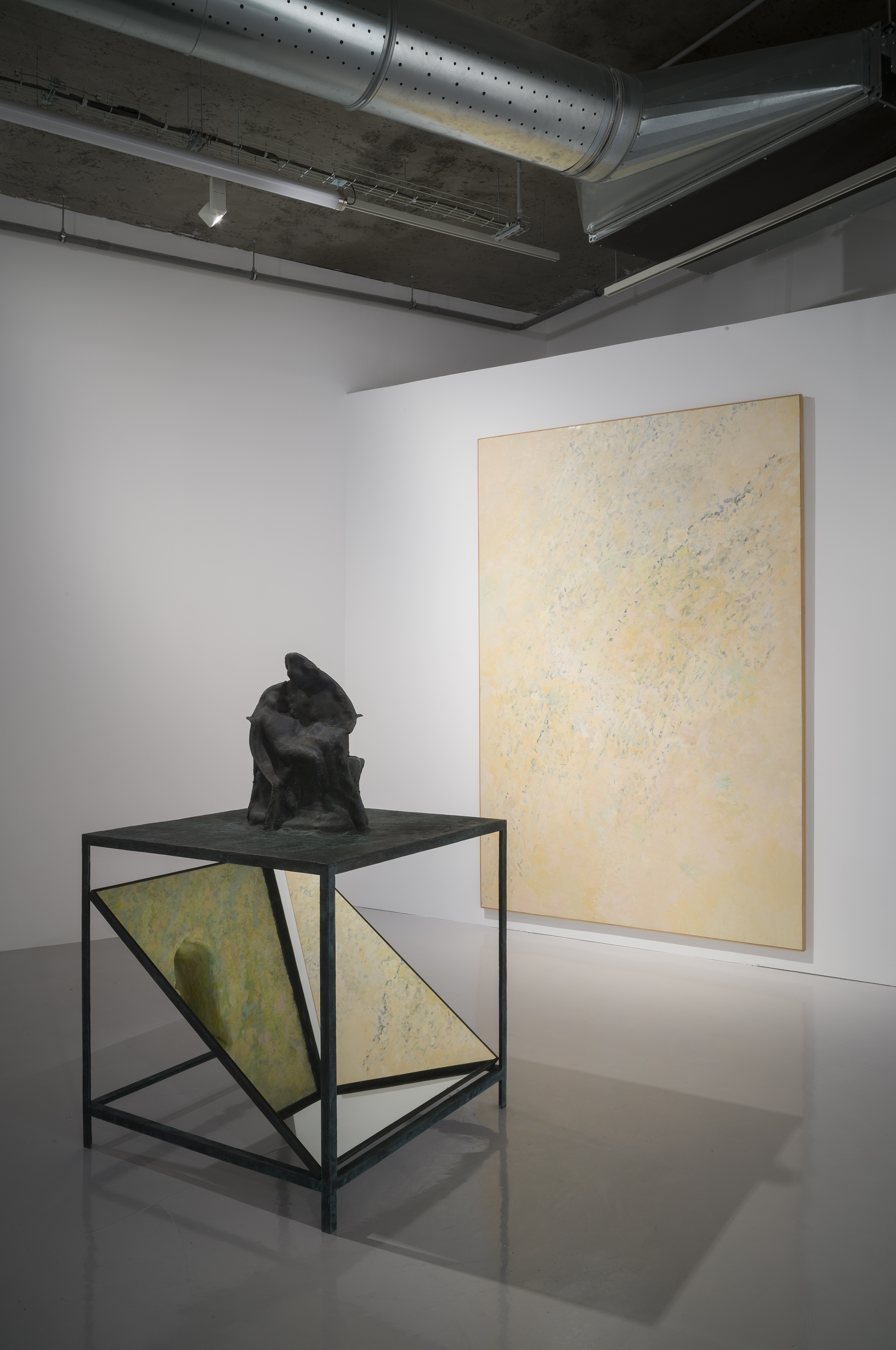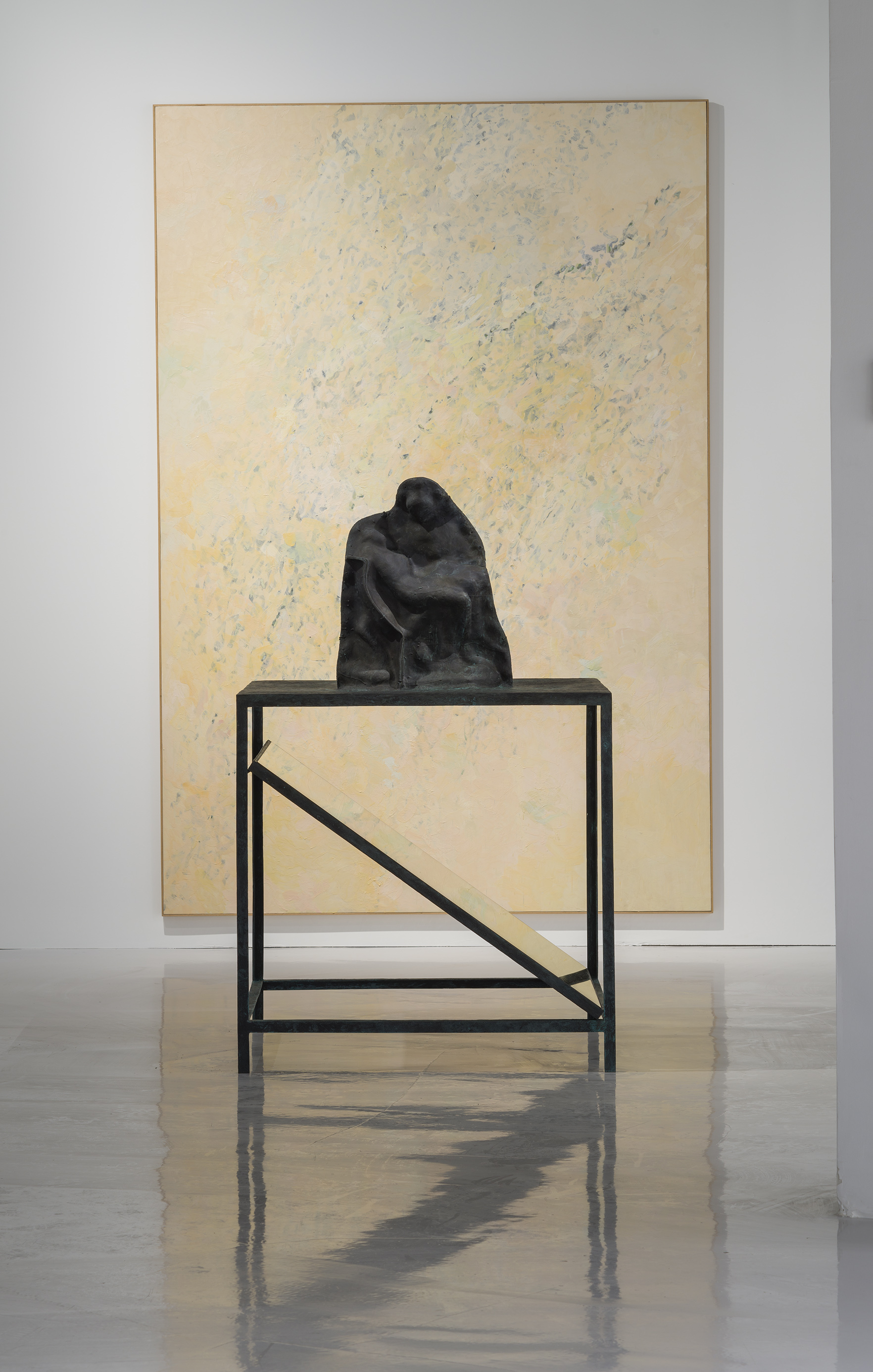João Queiroz, Francisco Tropa Francisco Tropa & João Queiroz
"A lot could be said here about caves, and shadows, and their relationship with art. A lot could be said about Virgins, and their settings on rocks, or on pillars. Rather than overwhelming with words this nicely-judged relationship, I want only to hint at Tropa’s success in conjuring up, in one self-contained sculpture, Christian and pre-Christian devotion, the icon and its devotee, as well as the high classic art of recent decades, along with us, its followers."
Virgin of the Rocks by Penelope Curtis, 2020, excerpt
At the beginning of this exhibition, there is the installation Pietà (2022), begun by Francisco Tropa, for which the artist has collaborated with the painter João Queiroz, enlightening the artistic and intellectual friendship between the two Portuguese artists.
The sculptor Francisco Tropa and the painter João Queiroz, long-time accomplices from Lisbon who have been collaborating episodically since the late 1990s, have jointly produced this second version of Pietà (2022). Combining painting, sculpture and optics, Pietà is a complex apparatus whose profoundly hybrid nature reveals the two artists’ refinement. Both are great experts in their respective techniques – here, bronze and encaustic – as well as being well-versed in art history (for the first), and passionate about philosophy (for the second).
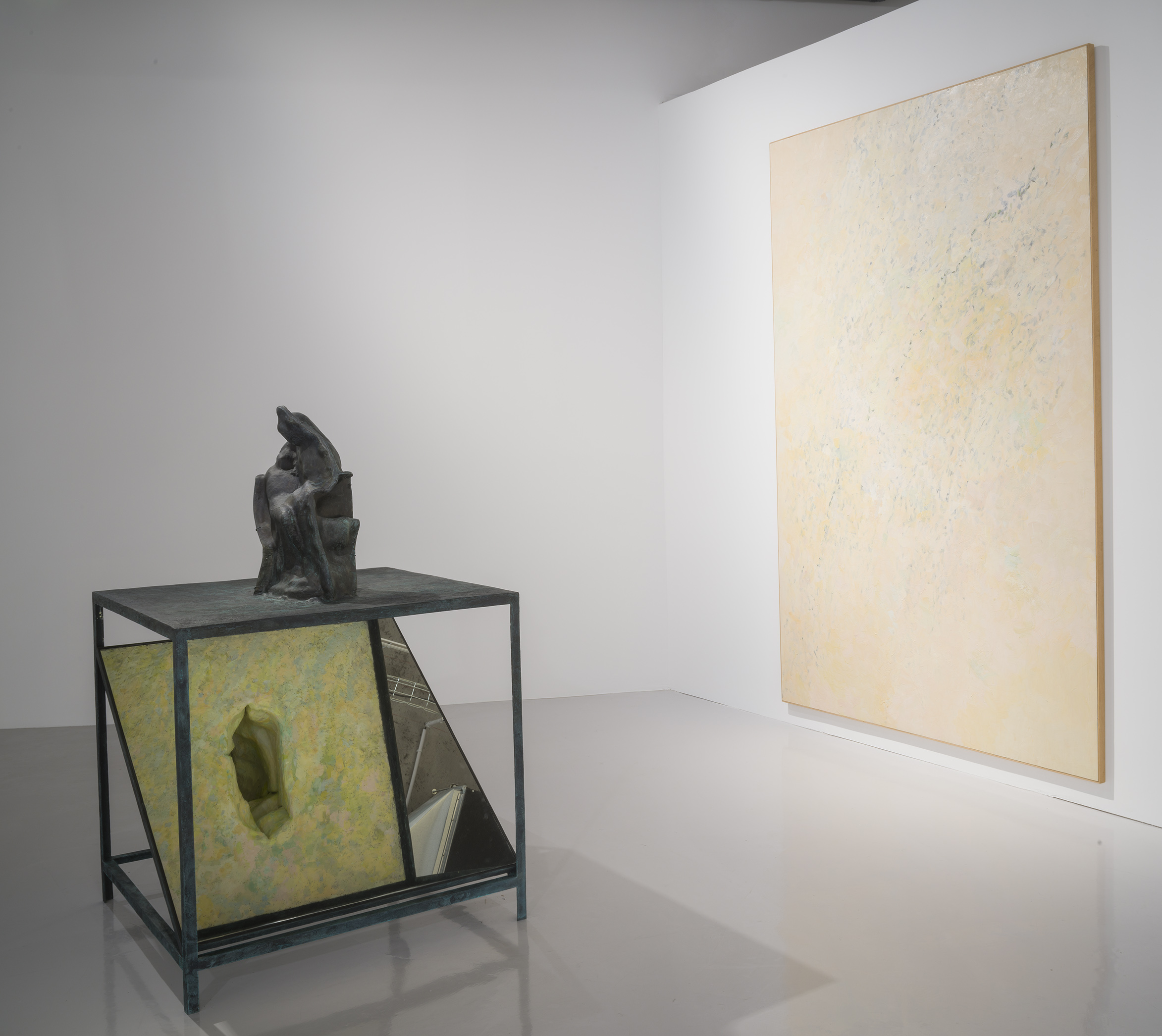
In 2019, Francisco Tropa produced the first version of Pietà alone: schematically, it is a bronze sculpture placed on a steel base, beneath which a tilted mirror enables us to see the hollow of the central object from below. This object is the imprint of a marble mould of Michelangelo’s Pietà (1497-1500), a masterpiece in the history of Western art, abundantly reproduced on the copies market with varying materials, scales and qualities. Tropa likes to draw from this category of works which are so famous as to have become archetypes, always identifiable even when they are only suggested.
Here, the resemblance to the original is more latent than striking. One guesses rather than recognises the silhouette of Christ abandoned in the arms of the seated Virgin, since these are precisely the moulds that Tropa decided to reproduce in bronze: four smooth, sutured fragments, whose hidden concave faces contain the negative impression. Fascinated by the extreme technicality of bronze casting (here produced using the lost wax method, elsewhere with sand), the artist confers durability on the transitory elements which guarantee the resemblance to the model. The central hollow of the bronze sculpture, which is not usually visible, is unveiled here thanks to the pierced base and the tilted mirror, which acts as a periscope. As a double-barrelled object, the work is first approached from the front, then from the side, in order to perceive the antrum of the sculpture from a good distance.
Guided towards this inner vision – bawdy or speleological, depending on your perspective – the visitor is thereby taken around the work, which acts as an apparatus with “the capacity to capture, orient, determine, intercept, model, control, or secure the gestures, behaviours, opinions or discourses of living beings,” to quote the definition given by Giorgio Agamben. Tropa’s work may be said to contain reminiscences of liturgical machines such as altarpieces or processions, developed by the Church to disseminate images, adjust calendars and propagate stories. More certainly, it bears the influence of the fetishes, icons and trickeries of modern art.
This second Pietà, entirely made of bronze, is presented in front of a large panel painted with encaustic by João Queiroz, who also painted the underside of the base and the interior of the sculpture. This deployed configuration took shape in Tropa’s mind based an iconic image: the photograph of Marcel Duchamp’s ready-made Fountain taken by Alfred Stieglitz to illustrate the magazine The Blind Man, after the urinal was rejected by the Society of Independent Artists in New York in 1917. Apprehended as an indecent sexual and scatological joke, the object was also turned down for status reasons: the jury did not consider it to be a work of art. The articles in The Blind Man, on the other hand, were full of praise for it, magnifying its surprising lines and reading vaguely figurative overtones into it. The Fountain was given the nickname the Madonna or the Buddha of the bathroom. Pietà, in a way, is its descendant.
Stieglitz’s photograph, one of the few images to bear witness to the “original” urinal, is composed in such a way as to legitimise the artistic nature of the object: presented on a pedestal, with the painting The Warriors by Mardsen Hartley as a backdrop, accentuated by particular lighting, with the signature and date clearly visible (R. Mutt, 1917). Decorum and photography reinforce the decision of the artist, and the pissotière thus becomes a work of art. But Tropa was foremost fascinated by the spatial transformations: moving (from the store to the gallery) and tilting 90 degree (from the wall to the base).
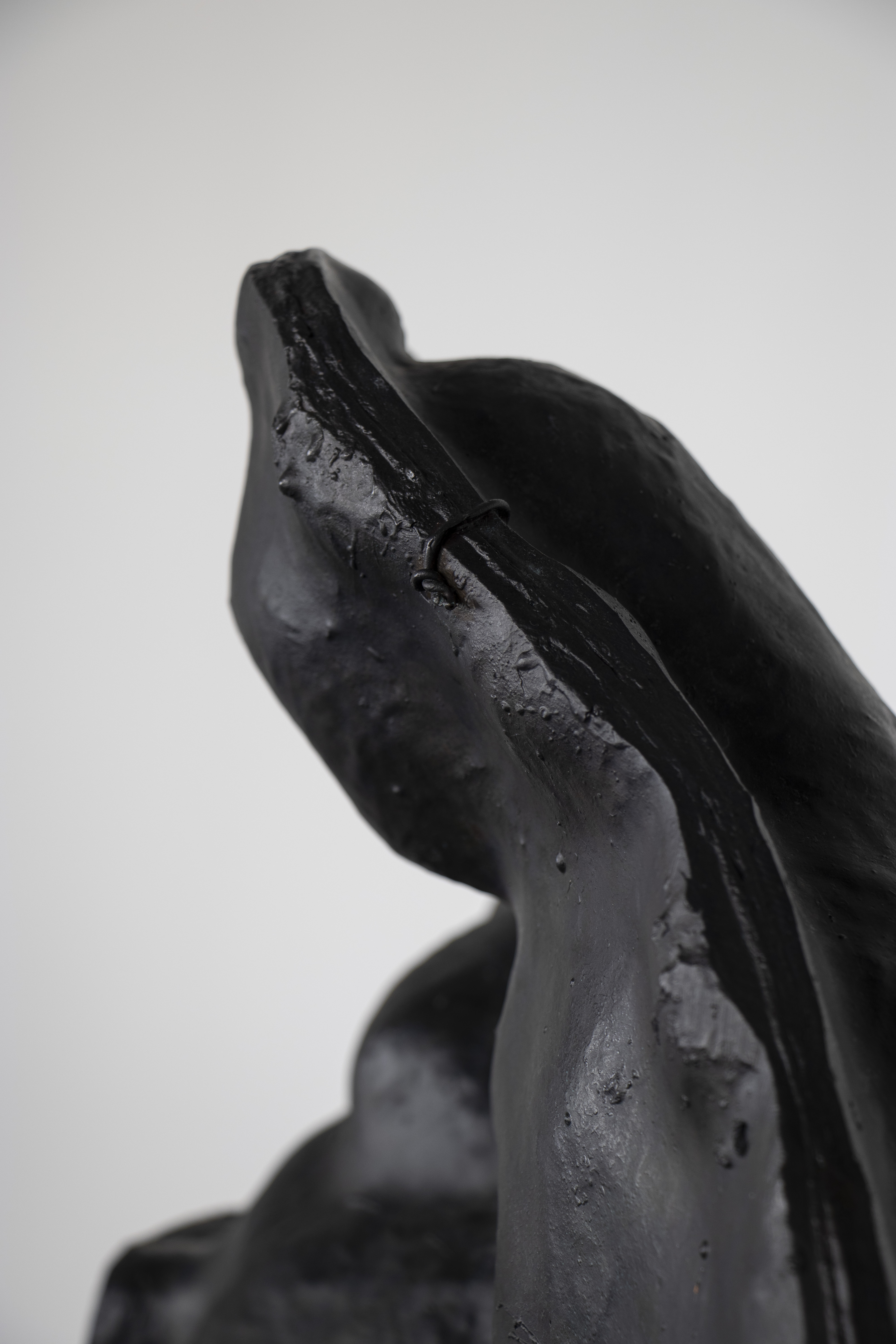
With his Pietà, the artist broaches the fundamental issues of sculpture, which were re-enacted by minimalism, anti-form and appropriationism in the second half of the twentieth century. Verticality versus horizontality: the erection of a heroic sculpture (Brancusi’s Endless Column, Colonne sans fin) versus the grounding of a dismantled one (Carl Andre said he wanted to put this Endless Column “on the ground”). Closure versus openness: closed forms versus a revealed interiority. Fabrication versus borrowing: new works crafted by the artist’s hand versus pre-existing objects which are simply reappropriated.
João Queiroz’s painting, placed on the reverse and in the background of Pietà, further compounds its “indecision,” blurring the boundaries between painting and sculpture, between representation and abstraction. Quieroz, who has a background in philosophy, has been active as a painter since the early 1980s. In the mid-1990s, he decided restrict his practice to landscapes, not out of romantic nostalgia but in order to question the image’s conditions of determination – or rather of indeterminacy. Eliminating all traces of figuration, his landscapes border on abstraction. The painting with watercolour, oil, and here with encaustic, is revealed in and of itself, in a palette of ochres, greens, blues and pinks superimposed in visible strokes, with a controlled amplitude. The question of the differentiation and identity of objects is played out in the contours of its forms. As a painter-philosopher concerned by ontological questions, Queiroz experiments with the experience of limits: the limits of contours, mediums and subjects. One of the philosophical disciplines which drives him is mereology, a branch of formal ontology which seeks to define parts, wholes, and the relationships between them.
The last vision we have of Pietà is indirect: the tilted mirror reflects the encaustic painting created by João Queiroz under the top of the pedestal-table and inside the Pietà. The painting literally funnels into a cavity reminiscent of a miniature cave, full of asperities and shadows, in which the shapes and colours gradually dissolve. This highly enigmatic, upended vision feeds infinite projections and interpretations, especially that of the cave as symbol of the matrix. Abounding in more or less hermetic references, Pietà presents itself as a “multi-layered” work, whose primary experience is that of a quest for limits and a point of view, or how to negotiate with a disturbing indeterminacy
